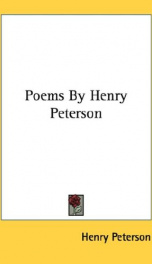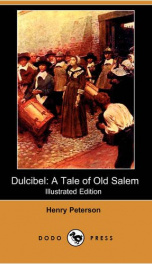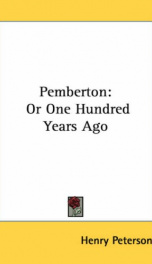Peterson Henry

Howard Pyle (March 5, 1853 – November 9, 1911) was an American illustrator and writer, primarily of books for young audiences. A native of Wilmington, Delaware, he spent the last year of his life in Florence, Italy. In 1894 he began teaching illustration at the Drexel Institute of Art, Science and Industry (now Drexel University), and after 1900 he founded his own school of art and illustration called the Howard Pyle School of Illustration Art. The term the Brandywine School was later applied to the illustration artists and Wyeth family artists of the Brandywine region by Pitz (later called the Brandywine School).[1] Some of his more famous students were Olive Rush, N. C. Wyeth, Frank Schoonover, Elenore Abbott, Ellen Bernard Thompson Pyle, and Jessie Willcox Smith. His 1883 classic The Merry Adventures of Robin Hood remains in print to this day, and his other books, frequently with medieval European settings, include a four-volume set on King Arthur that cemented his reputation. He wrote an original work, Otto of the Silver Hand, in 1888. He also illustrated historical and adventure stories for periodicals such as Harper's Weekly and St. Nicholas Magazine. His Men of Iron was made into a movie in 1954, The Black Shield of Falworth. Pyle travelled to Florence, Italy to study mural painting in 1910, and died there in 1911 of sudden kidney infection (Bright's Disease). In addition to numerous illustrations for Harper's Weekly, other periodical publications, and the children's books of others, Pyle wrote and illustrated a number of books himself. The Merry Adventures of Robin Hood is Pyle's distillation of many Robin Hood legends and ballads, modified to make them suitable for the child audience he sought to appeal to. He modified the ballad "Robin Hood's Progress to Nottingham", changing it from Robin killing fourteen foresters for not paying on a bet, to the robbers threatening Robin, and Pyle has Robin kill only one man who shoots at him first. Tales where Robin steals all that a traveler carried, such as "Robin Hood and the Bishop of Hereford", were changed so that the victim keeps a third, and another third is dedicated to the poor. Pyle did not have much more concern for historical accuracy than the ballads, though he did alter the name of the queen in "Robin Hood and Queen Katherine" to Queen Eleanor, historically compatible with the king with whom Robin made his peace being King Richard the Lion-Hearted. Indeed, none of the tales in the book were Pyle's own invention. However, he wove the tales together to form a unified story. The adventure with the Curtal Friar, for instance, was not an isolated tale, but undertaken to bring back Friar Tuck, because a priest was needed to marry Allan a Dale to his sweetheart Ellen. Again, in "A Gest of Robyn Hode", the knight saved an anonymous wrestler who had won a bout but was likely to be murdered because he was a stranger, and Robin says that this excuses his delay, and that anyone who helps good yeomen is helpful to him; Pyle adapted it so that the wrestler was David of Doncaster, one of Robin's band in "Robin Hood and the Golden Arrow". Several characters that had appeared in only one ballad, such as David of Doncaster and Arthur a Bland, are more fully developed in this novelistic treatment of the tales. Pyle also wrote Otto of the Silver Hand, a story about the life of the son of a robber baron in the Dark Ages. In 1887 he wrote The Wonder Clock, a collection of twenty-four tales, one for each hour of the day. Each tale was prefaced by a whimsical verse telling of traditional household goings-on at that hour, illustrated by his sister Katharine. The tales themselves were written by Pyle based on traditional European folktales. A similar volume was Pepper and Salt, or Seasoning for Young Folk, which consisted of tales of traditional types for younger readers, also charmingly illustrated. A number of pirate legends by Pyle, including some of his drawings, were collected as Howard Pyle's Book of Pirates, published in 1921, ten years after his death. Pyle was widely respected during his life, and continues to be highly regarded, by illustrators and fine artists. His contemporary, Vincent van Gogh spoke of Pyle in a letter to his brother, saying that Pyle's work "...struck me dumb with admiration".[2]
do you like this author?
What readers are saying
What do you think? Write your own comment on this book!
write a commentWhat readers are saying
What do you think? Write your own comment on this author!
write a commentBook list

poems
Series:
Unknown
Year:
Unknown
Raiting:
5/5
Purchase of this book includes free trial access to www.million-books.com where you can read more than a million books for free. This is an OCR edition with typos. Excerpt from book: A hundred years are past; Our fathers, where are they ? Gone to the regions vast Of heaven's unending day. But the great work they wrought Remains to bless us still ; And hallows ever in our thought This gorge and wooded hill. BAYARD TAYLOR. I have no tears to shed upon thy grave, For thou hast had of life a heaped-up measure, Gathering from every land and every wave, Fresh stores of thought to add unto thy treasure. I saw thee first in youth, with eyes of light, And heart all eager for the world before thee: I marked thy upward course from height to height, Where thy strong will and gift of genius bore thee. Then came the hour when, rising in her pride, Thy country crowned with bays thy brilliant story, And sages gathered gladly to thy side, To add their laurels to thy wreath of glory. Finished at last thy work beneath the sun, Ripened the fruit for which this life is given, I cannot weep, thy course so nobly run, Thou takest a still higher flight to heaven. SUBMISSION. "Not my -will, but thine, 0 Lord." In youth we cling to breath, We will not hear of death, In this or future worlds we will not cease to be; To go to whence we came, All blown out like a flame, Seems like an evil thought or wild insanity. Time tames our heated blood, Dashes our hopeful mood, We win not what we would, we lose what most we prize; Our friends grow cold and fail, Faces we love grow pale, We close the white lids o'er the tender, trusting eyes. Weary and sad and worn, Failure and sorrow torn, Existence grows to seem a poorer, meaner thing; The thought of dying all, As leaves and roses fall, Loses in part its olden bitterness and sting. Here then our sad thoughts rest, What God has willed is best; Be...
Show more
add to favoritesadd In favorites
Book list

poems
Series:
Unknown
Year:
Unknown
Raiting:
5/5
Purchase of this book includes free trial access to www.million-books.com where you can read more than a million books for free. This is an OCR edition with typos. Excerpt from book: A hundred years are past; Our fathers, where are they ? Gone to the regions vast Of heaven's unending day. But the great work they wrought Remains to bless us still ; And hallows ever in our thought This gorge and wooded hill. BAYARD TAYLOR. I have no tears to shed upon thy grave, For thou hast had of life a heaped-up measure, Gathering from every land and every wave, Fresh stores of thought to add unto thy treasure. I saw thee first in youth, with eyes of light, And heart all eager for the world before thee: I marked thy upward course from height to height, Where thy strong will and gift of genius bore thee. Then came the hour when, rising in her pride, Thy country crowned with bays thy brilliant story, And sages gathered gladly to thy side, To add their laurels to thy wreath of glory. Finished at last thy work beneath the sun, Ripened the fruit for which this life is given, I cannot weep, thy course so nobly run, Thou takest a still higher flight to heaven. SUBMISSION. "Not my -will, but thine, 0 Lord." In youth we cling to breath, We will not hear of death, In this or future worlds we will not cease to be; To go to whence we came, All blown out like a flame, Seems like an evil thought or wild insanity. Time tames our heated blood, Dashes our hopeful mood, We win not what we would, we lose what most we prize; Our friends grow cold and fail, Faces we love grow pale, We close the white lids o'er the tender, trusting eyes. Weary and sad and worn, Failure and sorrow torn, Existence grows to seem a poorer, meaner thing; The thought of dying all, As leaves and roses fall, Loses in part its olden bitterness and sting. Here then our sad thoughts rest, What God has willed is best; Be...
Show more
add to favoritesadd In favorites

an address delivered before the junior anti slavery society of the city and co
Series:
Unknown
Year:
Unknown
Raiting:
4/5
Show more
add to favoritesadd In favorites

Dulcibel
Series:
Unknown
Year:
Unknown
Raiting:
4/5
Henry Peterson (1818-1891) was an American publisher and author. He was a member of the Junior Anti-Slavery Society, of Philadelphia, and gave an address on July 4th, 1838 entitled Address on American Slavery. With Edmund Deacon he published the Saturday Evening Post, in Philadelphia in 1839 and was it's editor for almost 30 years from 1846-74. His works include: The Twin Brothers (1843), Poems (2 volumes, 1863/1883), Universal Suffrage (1867), The Modern Job (1869), Pemberton; or, One Hundred Years Ago (1873), Confessions of a Minister (1874), Helen; or, One Hundred Years Ago (1876), Bessie's Six Lovers: A Summer Idyl (1877), Caesar: A Dramatic Study (1879) and Dulcibel: A Tale of Old Salem (1907).
Show more
add to favoritesadd In favorites
What readers are saying
What do you think? Write your own comment on this author!
write a commentif you like Peterson Henry try:
readers also enjoyed
What readers are saying
What do you think? Write your own comment on this author!
write a commentGenre
if you like Peterson Henry try:
readers also enjoyed
Do you want to exchange books? It’s EASY!
Get registered and find other users who want to give their favourite books to good hands!


